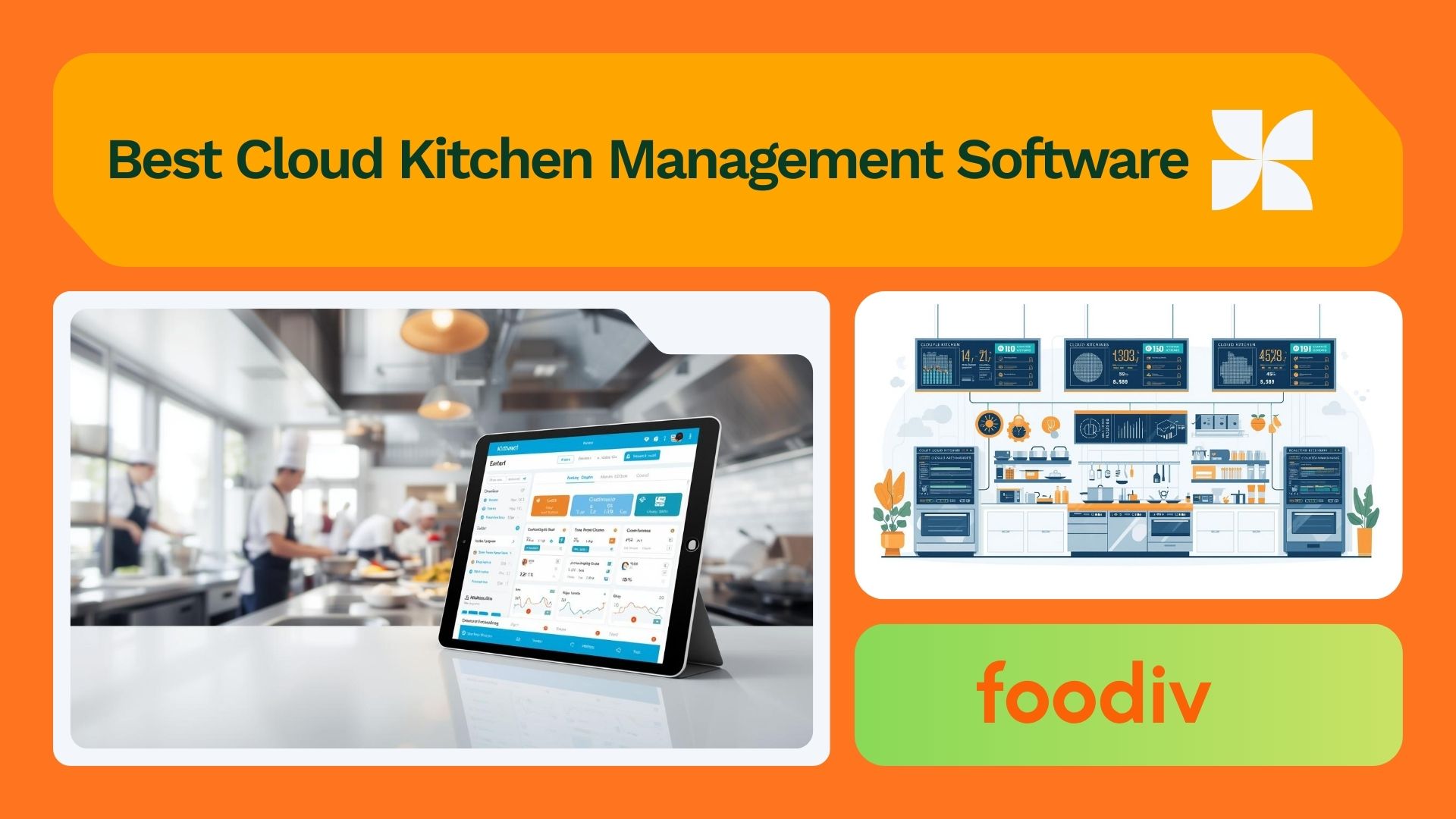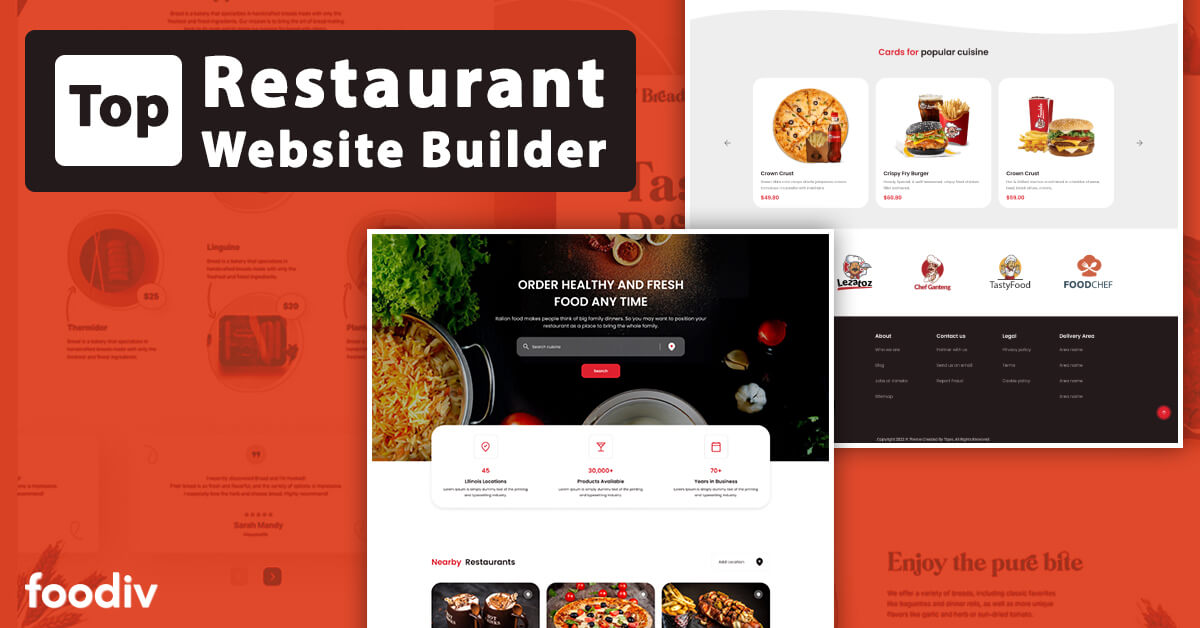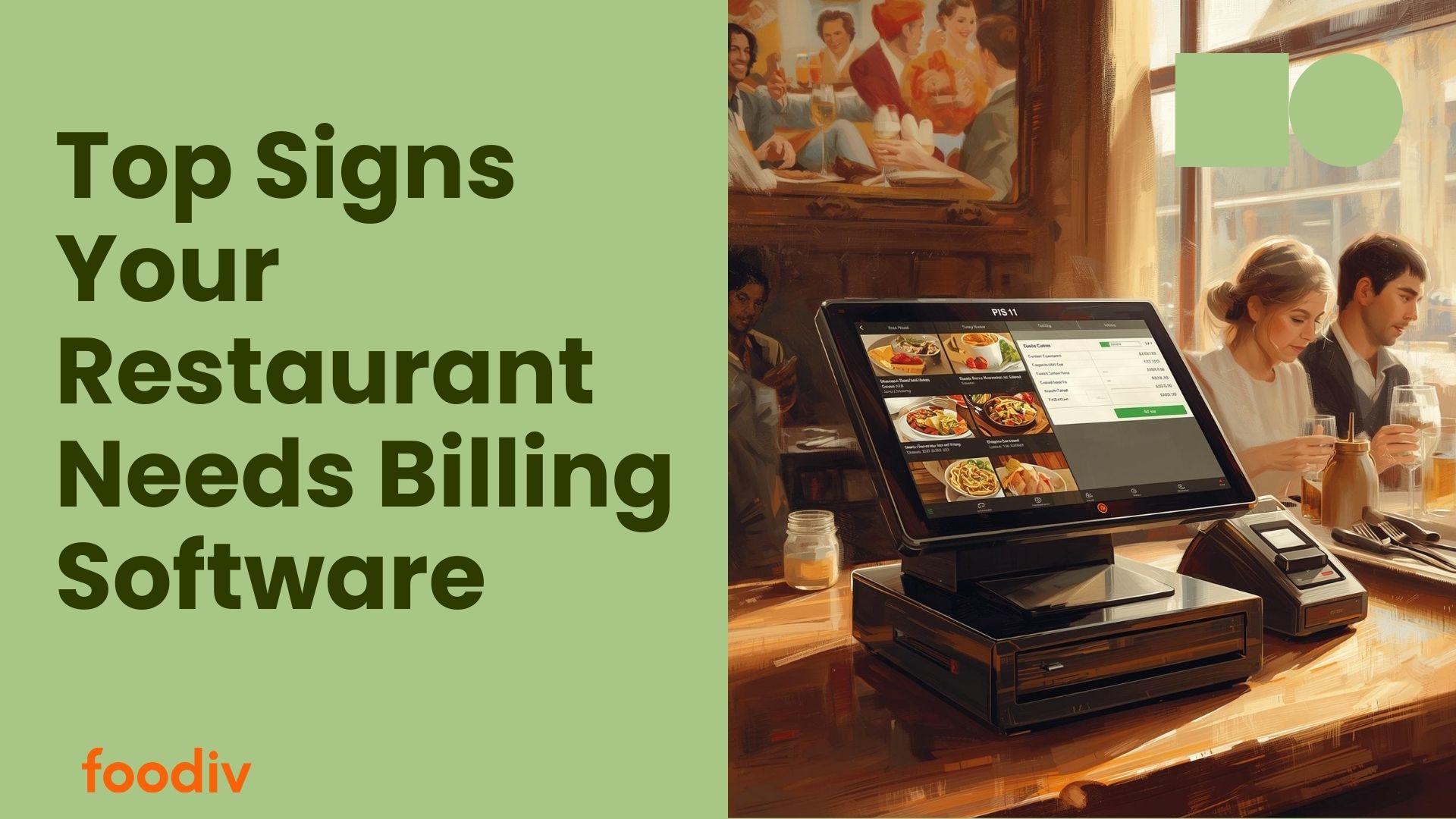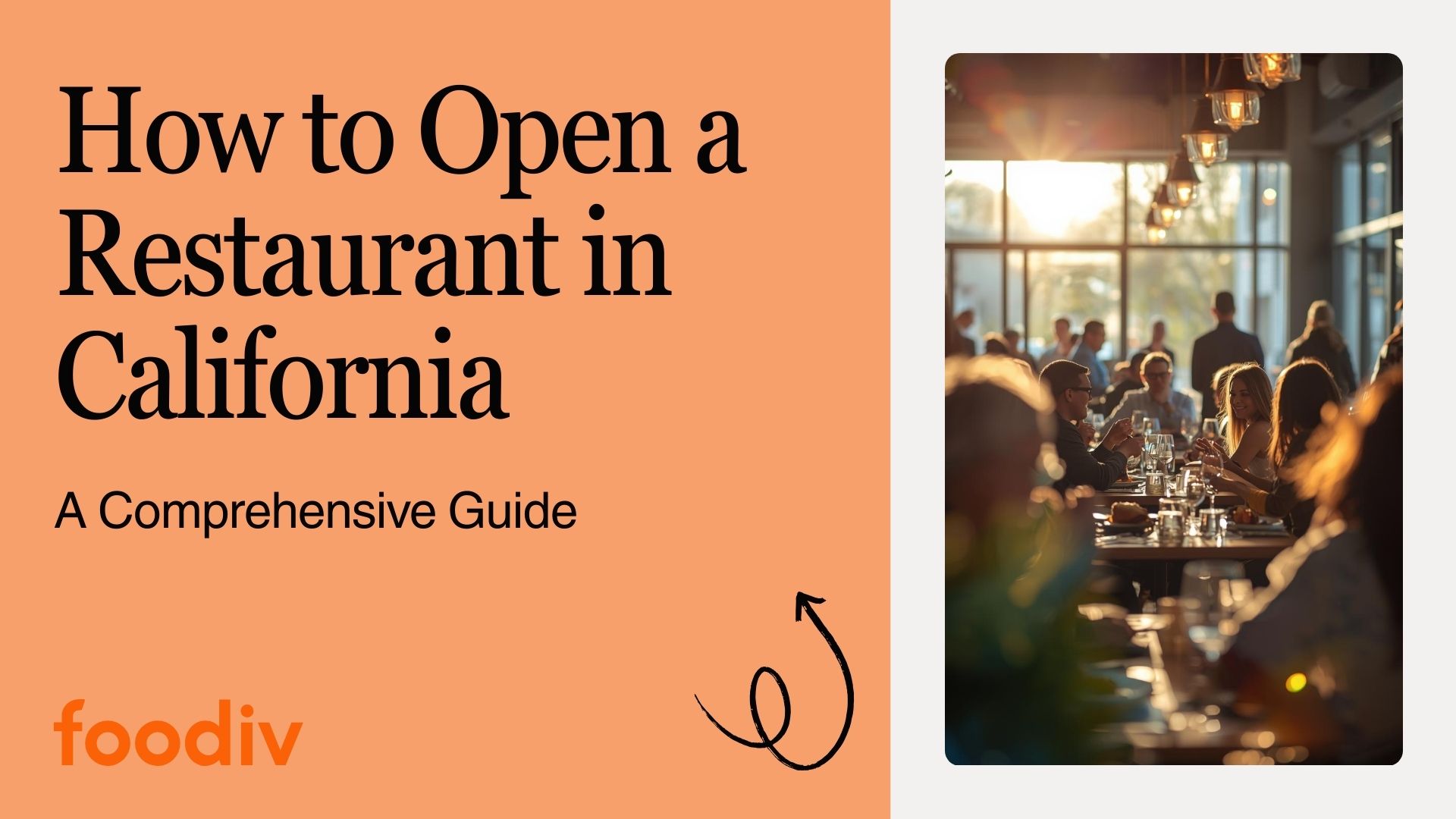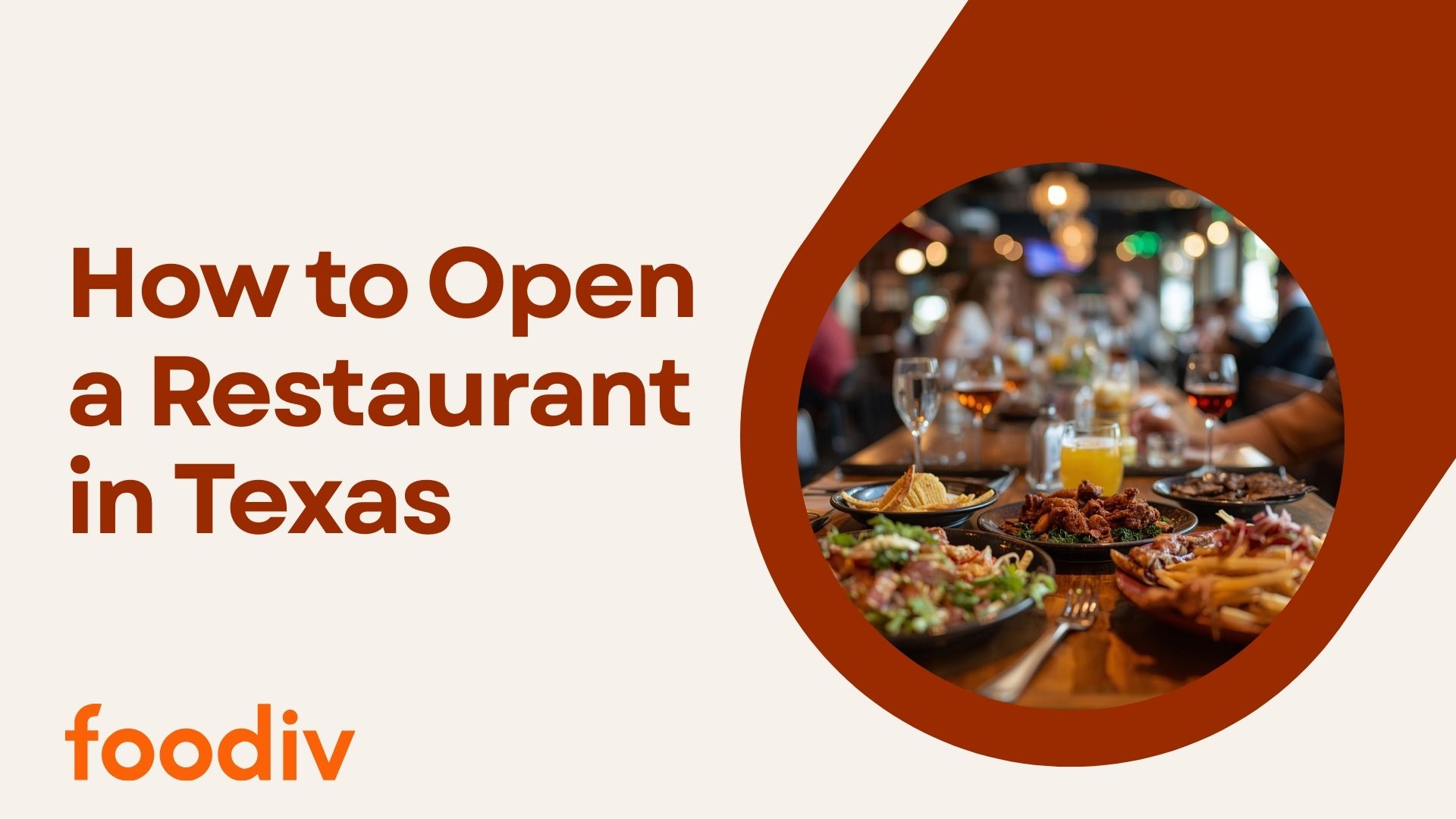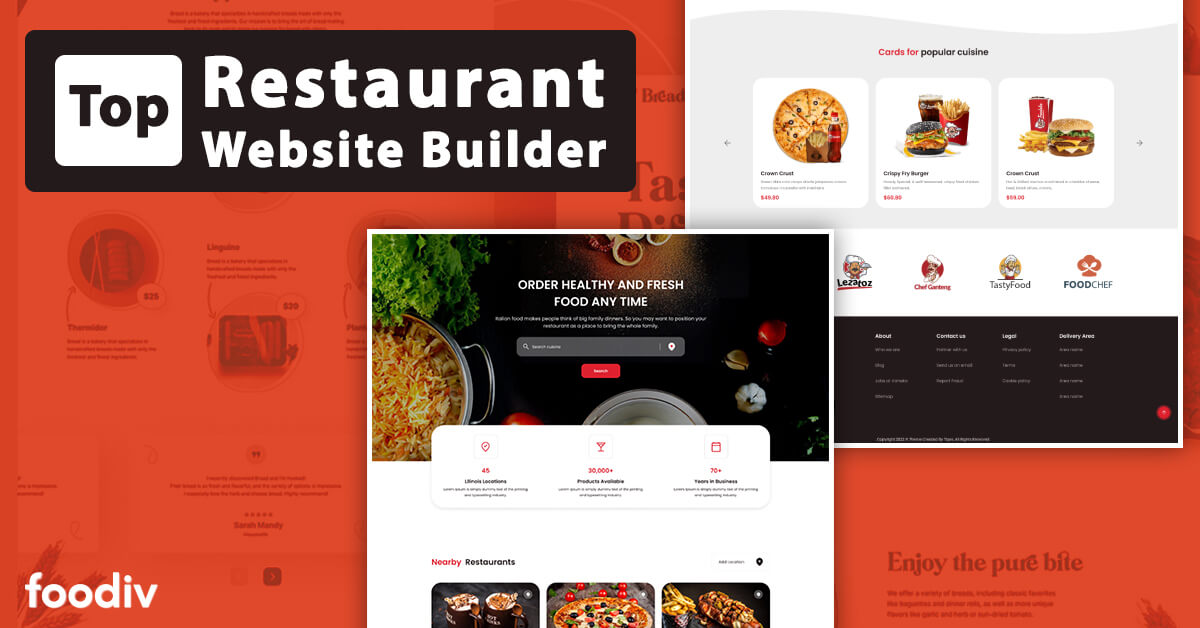
The restaurant industry has undergone a digital revolution in recent years, and one of the most transformative innovations has been the online food ordering system. As consumer behavior shifts towards speed, convenience, and contactless interactions, restaurants are increasingly adopting digital platforms to stay relevant and competitive. Whether you run a cozy cafe or a busy multi-location brand, implementing a food ordering system is no longer optional—it is essential for growth and efficiency.
Today’s diners expect to browse menus, place orders, and complete payments without making a phone call or standing in line. This growing demand has made it vital for restaurant owners to invest in technology that not only enhances customer experience but also streamlines operations on the backend.
A carefully planned and well-executed system can become a key driver of long-term success. To get started, it is important to understand your needs and begin by selecting a good food ordering system for restaurant that aligns with your brand, budget, and customer preferences.
Why Implement a Food Ordering System?
Implementing a food ordering system is quickly becoming essential for restaurants aiming to stay competitive in today’s market. As customer preferences shift toward convenience and speed, online ordering helps meet those demands while improving operational efficiency. Let’s explores the imporatant reasons why introducing a food ordering system can drive growth and enhance your restaurant’s performance.
- Improved Customer Convenience: Customers can place orders from the comfort of their homes or on-the-go, using smartphones or desktops.
- Increased Operational Efficiency: Food orders are streamlined directly to the kitchen, reducing manual handling, errors, and miscommunication.
- Enhanced Revenue Opportunities: Online systems can offer upsell prompts, customizations, and promotions that increase average order value.
- Customer Data Collection: With the right system, you can capture valuable insights into customer behavior, order trends, and preferences.
What to Expect From This…
From now onward, we will walk through each step of the implementation process in detail. As a restaurant and food business owners, You will learn how to define your business objectives, explore platform options, integrate your system with POS operations, design a seamless customer interface, and much more. Whether you are looking for a third-party solution or want to build your own food ordering system, this guide provides the insights you need to make informed decisions and get started successfully.
Define Your Objectives and Business Model
Before selecting a food ordering system or investing in technology, it is essential to define your restaurant’s goals. Understanding what you hope to achieve with your food ordering system will help you choose the right tools, avoid unnecessary expenses, and create a streamlined experience for both customers and staff.
Set Clear Objectives
Let’s start with the first and most important step which is setting clear objectives for your online food ordering system:
- Reduce Third-Party Commissions: Are you looking to avoid high fees charged by delivery aggregators and increase your profit margins?
- Increase Direct Orders: Do you want customers to place orders directly from your website or app, allowing you to retain control over branding and service?
- Improve Customer Experience: Is your goal to provide a faster, smoother, and more personalized ordering experience for your guests?
- Gain Marketing Insights: Are you interested in collecting customer data to support email campaigns, loyalty programs, and targeted promotions?
Choose a Business Model
The business model you choose will impact the structure, cost, and control of your food ordering system. There are two primary options available:
Third-Party Aggregators
Pros: Easy setup, access to a large customer base, and built-in delivery services.
Cons: High commission fees, limited branding control, and restricted access to customer data.
Direct Food Ordering System
Pros: Full control over branding, customer experience, and data; no commission fees.
Cons: Requires more effort to set up, manage, and market.
Choosing the right model depends on your current resources, technical capabilities, and long-term goals. Many restaurants find success by starting with a direct system and complementing it with third-party aggregators during high-demand periods.
Explore Platform Options
Once your goals and business model are clearly defined, the next step is choosing the right food ordering system to power your food ordering system. The platform you select should align with your operational needs, technical resources, and customer expectations. Whether you opt for a third-party solution or a direct ordering platform, the choice will significantly impact your restaurant’s digital ordering experience.
Third-Party Aggregators
Third-party platforms like Uber Eats, Grubhub, DoorDash, and Postmates offer ready-made solutions for online food ordering and delivery. These services come with built-in user bases and marketing channels that can help you attract customers quickly.
- Advantages:
- Quick and easy onboarding
- Access to a large pool of active users
- No need to manage logistics like delivery
- Limitations:
- High commission fees on every order
- Little to no control over branding and user experience
- Limited access to valuable customer data
Third-party aggregators are suitable for restaurants looking for quick exposure without managing the complexity of delivery and online infrastructure. However, their long-term cost and limitations in customer ownership can be a drawback.
Direct Ordering Platforms
If you prefer more control over branding and customer engagement, a direct food ordering platform is a better fit. These best food ordering platforms can either be custom-built or provided by companies like Foodiv, Square Online, BentoBox, GloriaFood, or Orderable.
- Advantages:
- Full control over user interface and experience
- Direct access to customer data and order history
- Custom branding to reflect your restaurant’s identity
- No commissions-more profits stay with you
- Limitations:
- Requires more setup time and resources
- Marketing and traffic generation is your responsibility
These online food ordering systems offer scalability and flexibility, allowing you to tailor the experience to your audience. To help make your decision, you can browse reviews and user feedback on the best restaurant online ordering systems and compare them based on pricing, features, and customer support.
Integrate With POS and Restaurant Operations
A reliable food ordering system does more than just accept orders—it should work in sync with your restaurant’s existing operations. Integration with your Point of Sale (POS) system ensures that orders flow smoothly from customer devices to your kitchen, reducing errors, speeding up service, and improving overall efficiency.
Benefits of Food Ordering System Integration
When your food ordering software is fully integrated with your POS system, it creates a connected environment where everything from order taking to kitchen ticket printing happens seamlessly. Here are the main benefits:
- Real-Time Order Syncing: Orders placed online are instantly reflected in the POS system, ensuring that the kitchen staff receives the correct information without manual re-entry.
- Accurate Inventory Management: Inventory levels are updated in real-time based on incoming orders, helping prevent over-ordering and stockouts.
- Streamlined Order Processing: Automated order routing saves time and reduces the likelihood of human error during busy periods.
- Centralized Reporting: Integrated systems allow you to track all orders—online and offline—in one place for better reporting and analytics.
Streamlined Kitchen Operations
An integrated food ordering platform enables your kitchen to receive orders quickly and in an organized format. This not only speeds up order preparation but also reduces stress for staff.
- Kitchen Display Systems (KDS): Orders appear on digital kitchen screens, minimizing the need for printed tickets and ensuring accuracy.
- Modifier Support: Special requests or item customizations are clearly displayed, reducing miscommunication between front-of-house and kitchen teams.
- Order Prioritization: Systems can intelligently batch and prioritize orders based on prep time and order type (pickup vs. delivery).
Integrating your food ordering solution with existing tools also improves customer experience. Orders are processed faster, preparation times are more accurate, and staff can focus more on quality and service.
Design the Customer Experience
A great food ordering system is not just about functionality—it is also about how easy and enjoyable it is for customers to use. From browsing the menu to completing a purchase, every interaction must be smooth, intuitive, and optimized for conversion. A seamless user experience (UX) can significantly increase the likelihood of repeat orders and positive reviews.
Key UX Features to Consider
Customers today expect convenience, clarity, and speed. The design and layout of your online food ordering system should meet these expectations across all devices.
- Mobile Responsiveness: The system should be fully optimized for mobile users, as most customers now order using smartphones or tablets.
- Clean Layout and Navigation: A minimalist design with clear categories, filters, and search options helps users find what they need quickly.
- Menu Customization: Allow users to easily modify orders, such as choosing add-ons, removing ingredients, or selecting portion sizes.
- Reorder Capabilities: Provide returning customers with the option to view order history and reorder favorite items with one click.
- Streamlined Checkout: Reduce steps and input fields at checkout. Autofill for address and payment details can enhance speed and ease.
Visual Elements That Influence Buyer Behavior
Design is more than just usability—it also affects how customers feel about your brand and offerings. High-quality visual elements can drive more clicks, conversions, and customer loyalty.
- Food Photography: Use appetizing, high-resolution images that accurately represent your dishes. This builds trust and increases desire to order.
- Clear Descriptions: Include concise yet informative descriptions for each menu item, highlighting ingredients, dietary notes, and flavor profiles.
- Social Proof: Display customer ratings or reviews where possible to help new users make decisions with confidence.
Designing a customer-friendly interface is a critical part of any successful food ordering solution. When customers enjoy using your platform, they are more likely to return, recommend it to others, and develop loyalty to your restaurant brand.
Set Up Fulfillment and Delivery Processes
Having an efficient order fulfillment and delivery setup is essential to the success of your food ordering system. Once an order is placed, the speed and accuracy with which it is prepared and delivered can make or break the customer experience.
Configure Fulfillment Options
Offer multiple fulfillment methods to accommodate different customer preferences and expand your service reach.
- In-Store Pickup: Ideal for local customers who prefer to order online and pick up their food in person. Ensure that pickup instructions are clear and timely.
- Curbside Pickup: Provide a contactless option where customers stay in their vehicles while staff bring the order to them. Include a field for car details during checkout.
- Delivery Services: You can manage deliveries in-house using your own staff or integrate with third-party delivery fleets for broader coverage and automation.
Delivery Tracking and Communication
Customers expect real-time updates on their orders. Integrating tracking and communication tools adds transparency and enhances the customer experience.
- Order Status Notifications: Send SMS or email alerts when an order is confirmed, prepared, out for delivery, and delivered.
- Live Tracking: Allow customers to track their delivery driver on a map for accurate ETAs and added convenience.
- Support Channels: Provide easy access to customer support in case of delays or issues with the order.
Staff Training and Workflow Optimization
Your restaurant ordering system is only as effective as the people operating it. Make sure your team understands every step of the fulfillment process.
- Order Management: Train staff to monitor incoming orders in real-time, prepare items accurately, and mark orders as complete once ready for pickup or delivery.
- Clear Roles: Assign roles for packing, order verification, and handing off items to customers or drivers to avoid confusion.
- Feedback Collection: Encourage staff to note any recurring issues in the workflow to continuously improve the system.
Efficient fulfillment and delivery processes help you keep customer satisfaction high while maintaining operational control. A food ordering system that supports multiple fulfillment modes and provides real-time communication tools can greatly increase your restaurant’s reliability and repeat business.
Implement Payments and Ensure Data Security
A seamless and secure payment process is a critical component of any food ordering system for restaurants. Customers want the freedom to pay using their preferred method, and they expect their payment and personal information to be protected.
Multiple Payment Methods
Offering diverse payment options can improve the customer experience and reduce cart abandonment. Your food ordering software should be flexible enough to support both traditional and modern payment channels.
- Credit and Debit Cards: Ensure compatibility with major card providers such as Visa, Mastercard, and American Express for global acceptance.
- Digital Wallets: Integrate wallets like Apple Pay, Google Pay, and PayPal for faster and more convenient mobile checkouts.
- UPI and Local Methods: Depending on your region, include popular local payment gateways or QR-based payment systems for ease of use.
- Cash on Delivery (COD): Still a preferred option for some customers, especially in areas with low digital adoption. Make it available where applicable.
Secure Payment Processing
Security should never be compromised when handling sensitive customer data. Choose a food ordering platform that follows industry standards and best practices for secure payments.
- PCI DSS Compliance: Ensure that the payment processor is compliant with the Payment Card Industry Data Security Standard to safeguard cardholder information.
- SSL Encryption: Use Secure Sockets Layer (SSL) certificates to encrypt all customer data exchanged during transactions.
- Tokenization: Implement tokenization to substitute sensitive data with encrypted tokens, reducing the risk of data theft.
- Fraud Detection: Enable real-time fraud monitoring and verification steps such as 3D Secure (OTP verification) for added protection.
Customer Data Protection
Beyond payment security, your food ordering system should also protect customer information like names, phone numbers, addresses, and order history.
- Data Privacy Policies: Clearly communicate how customer data is collected, stored, and used, ensuring transparency and compliance with privacy laws.
- User Permissions: Allow customers to manage their data preferences, including opting out of marketing communications or deleting their account.
- Regular Security Audits: Conduct periodic reviews and updates to patch vulnerabilities and reinforce system integrity.
Onboard Your Food Ordering System Effectively
Once you’ve selected the right online food ordering system and configured its features, the next crucial step is onboarding. This process involves setting up your digital menu, testing workflows, and preparing your team for live operations.
Populate Your Digital Menu
Your QR menu is the core of your online ordering experience. A clear and attractive digital menu makes it easier for customers to explore your offerings and place orders confidently.
- Item Descriptions: Write concise yet informative descriptions that highlight ingredients, portion sizes, and taste notes.
- Categorization: Group similar items under sections such as Starters, Mains, Desserts, and Beverages for better navigation.
- Photos: Upload high-quality images for each dish to enhance appeal and increase conversions.
- Pricing and Variants: Clearly display prices, sizes, and optional add-ons like extra toppings or combos.
Test the System Thoroughly
Before going live, conduct a series of internal tests to ensure every part of the ordering system functions as expected.
- End-to-End Testing: Place test orders from various devices to verify menu layout, payment processing, and confirmation messages.
- POS and Kitchen Integration: Confirm that orders are correctly routed to the POS system and kitchen printers or displays.
- Notifications and Receipts: Check that order confirmations, SMS updates, and digital receipts are sent promptly to customers.
Soft Launch Strategy
A soft launch allows you to introduce the system gradually and make improvements based on real customer feedback before a full rollout.
- Launch with Limited Audience: Start by offering the system to loyal customers, staff, or a specific geographic area.
- Collect Feedback: Ask users about their experience with ordering, navigation, and payment to identify areas for improvement.
- Make Adjustments: Based on feedback, fine-tune menu details, update workflows, and address any technical glitches.
Proper onboarding sets the stage for long-term success. It helps ensure that your team is confident, your customers are satisfied, and your system operates without disruptions.
Launch and Promote Your System
After successfully onboarding and testing your online food ordering software, it’s time to launch it to the public. A strategic and well-promoted launch is essential to generate awareness, encourage adoption, and start building consistent online sales.
Promotion Strategies
Let your customers know that your online ordering system is live and ready to use. Use a variety of online and offline channels to build excitement and drive traffic.
- Website Integration: Place a clear and visible “Order Online” button on your homepage and menu pages, linking directly to your ordering platform.
- Social Media Announcements: Share launch updates, visuals, and how-to content across Instagram, Facebook, Twitter, and TikTok.
- Email Newsletters: Inform your mailing list subscribers with a special announcement that includes a link to your food ordering system.
- In-Store Signage: Use posters, table tents, and QR codes at your physical location to direct walk-in customers to your online ordering platform.
Encourage Customer Adoption
Beyond just announcing the launch, you should incentivize your customers to try the new system and make it part of their routine.
- First-Time Discounts: Offer a limited-time discount on first online orders to entice customers to use the system.
- Loyalty Rewards: Introduce a points-based program or exclusive online-only offers to encourage repeat business.
- Simple Ordering Experience: Highlight how easy it is to place an order—especially from mobile devices.
Train Your Team
Your staff should be fully prepared to support the online food ordering process and assist customers both in-store and online.
- System Knowledge: Train front-of-house (FOH), back-of-house (BOH), and kitchen staff on how to process, track, and fulfill online orders.
- Customer Assistance: Equip team members to answer questions about ordering online, payment methods, and pickup or delivery procedures.
- Monitor Performance: Assign roles to track orders and respond to customer feedback during the early days of the launch.
A strong launch supported by a smart promotion plan sets the foundation for long-term growth. The more people know about your online ordering system and the more incentives you provide, the faster you’ll see adoption and sales increase.
Analyze and Optimize
Launching your food ordering system is an important milestone, but it is just the beginning. To ensure continued success and growth, you must monitor how the system is performing and make regular improvements based on data.
Metrics to Track
Your food ordering software should offer built-in analytics or integrate with third-party tools to help you track performance effectively. Focus on the following metrics to gain valuable insights.
- Order Volume: Monitor how many orders you receive daily, weekly, and monthly to evaluate growth trends and peak periods.
- Average Order Value (AOV): Calculate the average revenue per order to assess the impact of upselling strategies and combos.
- Customer Retention Rate: Track how many customers return to place additional orders, and how frequently they order.
- Cart Abandonment Rate: Identify how many users add items to their cart but do not complete the purchase—then optimize checkout flow to reduce it.
- Most Popular Items: Determine which menu items sell the most to guide inventory, promotions, and menu placement.
Use Data to Refine Your Restaurant Strategy
The data you gather should guide continuous improvements. Regularly review reports and customer feedback to identify what’s working well and where enhancements are needed.
- Menu Adjustments: Remove low-performing items, optimize pricing, and highlight best-sellers to improve profitability and customer satisfaction.
- Checkout Optimization: Simplify the process, reduce required fields, and speed up payment options to improve conversion rates.
- Targeted Marketing: Use customer data to send personalized offers, promotions, and loyalty rewards based on order history and preferences.
Boost Sales Through Continuous Optimization
A proactive approach to monitoring and refining your food ordering system can significantly improve revenue and efficiency. A well-optimized platform not only provides a better customer experience but also directly contributes to operational excellence and profitability.
With the right data insights and strategic adjustments, your online ordering system becomes more than just a transaction tool—it becomes a powerful engine that increases restaurant sales and revenue over time.
Scale and Enhance Your Food Ordering System
Once your food ordering system is running smoothly and generating consistent orders, the next step is to scale and enhance it. Growth doesn’t just come from acquiring more customers—it also comes from improving features, expanding your offerings, and increasing customer loyalty through added value and convenience.
Introduce Advanced Features
Adding advanced tools to your food ordering platform can help improve user experience, boost average order value, and drive more engagement.
- AI-Powered Recommendations: Use smart algorithms to suggest related items, combos, or higher-margin products based on customer behavior.
- Multilingual Menus: Offer translations of your menu to reach a more diverse customer base and create a more inclusive experience.
- Voice Ordering Integration: Implement voice-command features compatible with virtual assistants like Alexa or Google Assistant for hands-free ordering.
Integrate Loyalty Programs and CRM Tools
Loyalty features and customer relationship management tools encourage repeat business and deepen your connection with your audience.
- Points-Based Rewards: Let customers earn points for each order and redeem them for discounts, free items, or exclusive offers.
- Automated Campaigns: Send emails or texts on birthdays, anniversaries, or after a period of inactivity to bring customers back.
- Segmentation: Group your audience by behavior, location, or preferences to deliver more targeted promotions and deals.
Expand to Ghost Kitchens and Multichannel Platforms
Once your ordering system is optimized, consider new business models and sales channels to expand your reach and revenue.
- Ghost Kitchens: Launch delivery-only brands that operate out of your existing kitchen or a shared facility to reach new customers without opening a physical space.
- Marketplace Integration: Continue using third-party platforms alongside your direct system to maximize exposure, especially during high-demand periods.
- Unified Dashboard: Use tools that consolidate all your ordering channels into one dashboard for easier management and performance tracking.
By adding new features, integrating smarter tools, and expanding strategically, your food ordering solution evolves into a long-term growth engine. Whether you’re serving a single neighborhood or expanding into new markets, these enhancements help you stay competitive and scalable in a fast-changing food service landscape.
Conclusion
Implementing a reliable and user-friendly food ordering system is a necessity for restaurant businesses. As customer expectations evolve and competition grows, restaurants must embrace digital solutions that streamline operations, reduce costs, and provide an excellent customer experience.
From setting clear business goals to integrating with your POS, designing intuitive interfaces, enabling secure payments, and continuously improving through analytics—each step contributes to a stronger, more profitable food ordering system. Whether you’re just starting or looking to upgrade your existing setup, the right tools and strategies can transform your restaurant’s operations.
A thoughtfully implemented food ordering system empowers your team, delights your customers, and opens new revenue opportunities. By keeping the user experience at the center and adapting to industry trends, your restaurant can thrive in the digital era and build lasting customer relationships.


